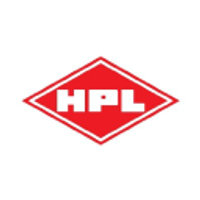
HPL Electric & Power Ltd
NSE:HPL


| US |

|
Johnson & Johnson
NYSE:JNJ
|
Pharmaceuticals
|
| US |

|
Berkshire Hathaway Inc
NYSE:BRK.A
|
Financial Services
|
| US |

|
Bank of America Corp
NYSE:BAC
|
Banking
|
| US |

|
Mastercard Inc
NYSE:MA
|
Technology
|
| US |

|
UnitedHealth Group Inc
NYSE:UNH
|
Health Care
|
| US |

|
Exxon Mobil Corp
NYSE:XOM
|
Energy
|
| US |

|
Pfizer Inc
NYSE:PFE
|
Pharmaceuticals
|
| US |

|
Palantir Technologies Inc
NYSE:PLTR
|
Technology
|
| US |

|
Nike Inc
NYSE:NKE
|
Textiles, Apparel & Luxury Goods
|
| US |

|
Visa Inc
NYSE:V
|
Technology
|
| CN |

|
Alibaba Group Holding Ltd
NYSE:BABA
|
Retail
|
| US |

|
JPMorgan Chase & Co
NYSE:JPM
|
Banking
|
| US |

|
Coca-Cola Co
NYSE:KO
|
Beverages
|
| US |

|
Walmart Inc
NYSE:WMT
|
Retail
|
| US |

|
Verizon Communications Inc
NYSE:VZ
|
Telecommunication
|
| US |

|
Chevron Corp
NYSE:CVX
|
Energy
|
Utilize notes to systematically review your investment decisions. By reflecting on past outcomes, you can discern effective strategies and identify those that underperformed. This continuous feedback loop enables you to adapt and refine your approach, optimizing for future success.
Each note serves as a learning point, offering insights into your decision-making processes. Over time, you'll accumulate a personalized database of knowledge, enhancing your ability to make informed decisions quickly and effectively.
With a comprehensive record of your investment history at your fingertips, you can compare current opportunities against past experiences. This not only bolsters your confidence but also ensures that each decision is grounded in a well-documented rationale.
Do you really want to delete this note?
This action cannot be undone.

| 52 Week Range |
357.6
629.5
|
| Price Target |
|
We'll email you a reminder when the closing price reaches INR.
Choose the stock you wish to monitor with a price alert.

|
Johnson & Johnson
NYSE:JNJ
|
US |

|
Berkshire Hathaway Inc
NYSE:BRK.A
|
US |

|
Bank of America Corp
NYSE:BAC
|
US |

|
Mastercard Inc
NYSE:MA
|
US |

|
UnitedHealth Group Inc
NYSE:UNH
|
US |

|
Exxon Mobil Corp
NYSE:XOM
|
US |

|
Pfizer Inc
NYSE:PFE
|
US |

|
Palantir Technologies Inc
NYSE:PLTR
|
US |

|
Nike Inc
NYSE:NKE
|
US |

|
Visa Inc
NYSE:V
|
US |

|
Alibaba Group Holding Ltd
NYSE:BABA
|
CN |

|
JPMorgan Chase & Co
NYSE:JPM
|
US |

|
Coca-Cola Co
NYSE:KO
|
US |

|
Walmart Inc
NYSE:WMT
|
US |

|
Verizon Communications Inc
NYSE:VZ
|
US |

|
Chevron Corp
NYSE:CVX
|
US |
This alert will be permanently deleted.
HPL Electric & Power Ltd
HPL Electric & Power Ltd. engages in the manufacture of electrical equipment. The company is headquartered in Noida, Uttar Pradesh. The company went IPO on 2016-10-04. The firm is engaged in manufacturing of electrical and power distribution equipment. The firm operates in four segments: Metering, Switchgears, Lighting, and Wires & Cables. The company offers a range of products from Industrial and Domestic Circuit Protection Switchgears, Cables, Energy Saving Meters, compact fluorescent lamp (CFL) & light-emitting diode (LED) Lamps, and Luminaires for Domestic, Commercial, and Industrial applications, Modular Switches covering the entire range of household, commercial and industrial electrical needs. The firm offers generation equipment, such as boilers, turbines, generators, transmission and distribution (T&D), and allied equipment such as transformers, cables, instrument transformers, insulators, insulating material, industrial electronics, indicating instruments, winding wires. The firm exports its products across south-east Asia, the Middle East, Europe, and Africa.

HPL Electric & Power Ltd. engages in the manufacture of electrical equipment. The company is headquartered in Noida, Uttar Pradesh. The company went IPO on 2016-10-04. The firm is engaged in manufacturing of electrical and power distribution equipment. The firm operates in four segments: Metering, Switchgears, Lighting, and Wires & Cables. The company offers a range of products from Industrial and Domestic Circuit Protection Switchgears, Cables, Energy Saving Meters, compact fluorescent lamp (CFL) & light-emitting diode (LED) Lamps, and Luminaires for Domestic, Commercial, and Industrial applications, Modular Switches covering the entire range of household, commercial and industrial electrical needs. The firm offers generation equipment, such as boilers, turbines, generators, transmission and distribution (T&D), and allied equipment such as transformers, cables, instrument transformers, insulators, insulating material, industrial electronics, indicating instruments, winding wires. The firm exports its products across south-east Asia, the Middle East, Europe, and Africa.
Revenue Mix: Consumer & Industrial (C&I) segment contributed 47% of revenue in H1, growing 30% in Q2 and 23% in H1, aided by strong Wires & Cables and a turnaround in Lighting.
Order Book Strength: The company ended the quarter with a smart meter–heavy order book of over INR 3,300 crores, giving multi-year execution visibility.
Metering Execution: Smart meter offtake improved 12% sequentially in Q2; management expects significant ramp-up in deliveries and revenue growth in H2, especially Q4.
Margins: Metering segment EBIT margins rose to around 17.5% due to pricing discipline and improved product mix; C&I segment is currently at around 11% EBIT margin.
Guidance & Outlook: Management anticipates a much stronger H2 and expects to achieve close to INR 2,000 crores revenue for the year, with both Metering and C&I segments growing.
CapEx & Cash Flow: Most Metering-related CapEx is complete; future CapEx will mainly be maintenance. Working capital days improved to 125, and inventory is expected to drop in H2.
Industry Trends: Despite temporary delays in smart meter rollouts, the company sees no structural slowdown and expects national installation momentum to accelerate.
Settlement Update: The long-standing dispute with Havells has been resolved, but details are confidential and there is no change to business operations.





























